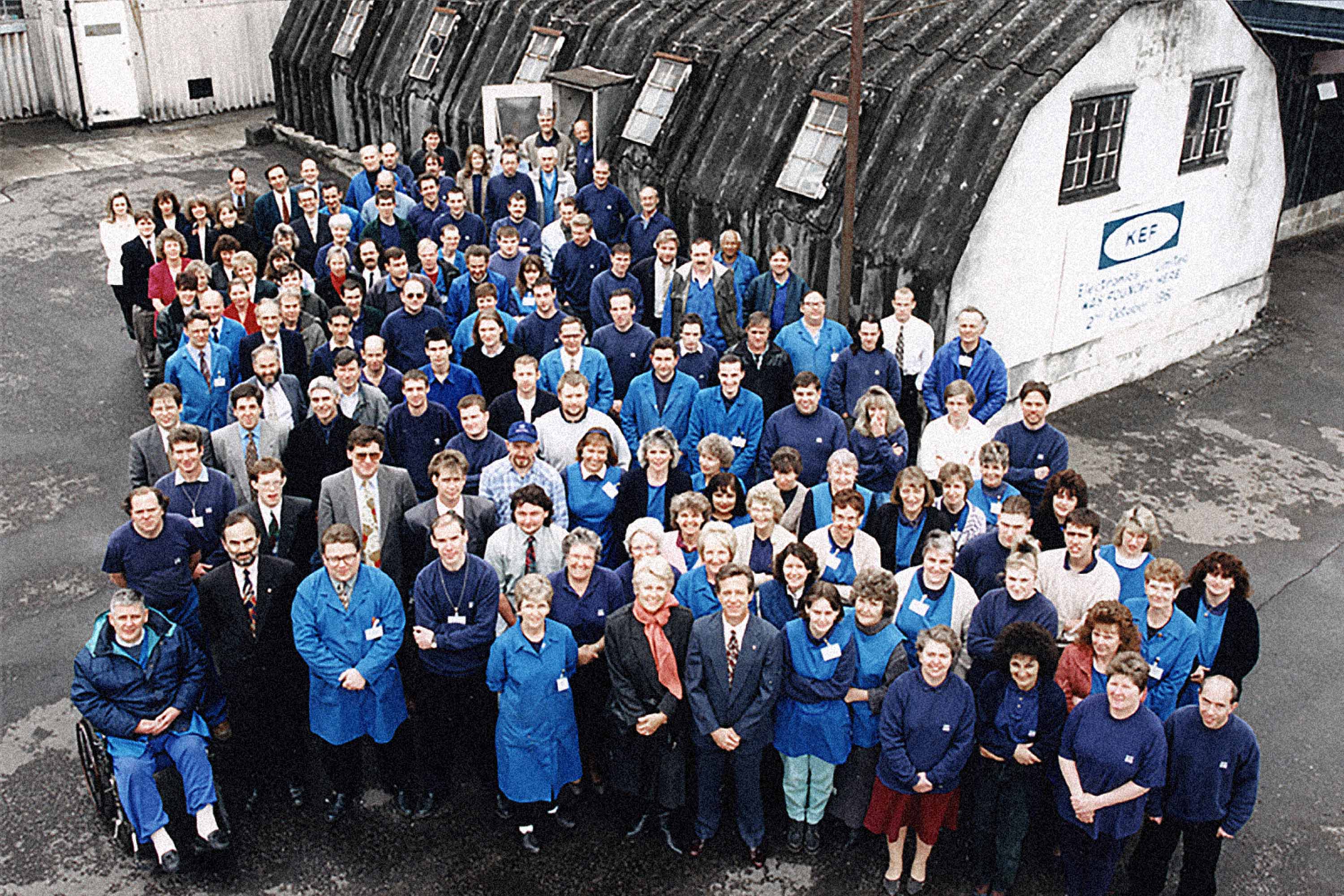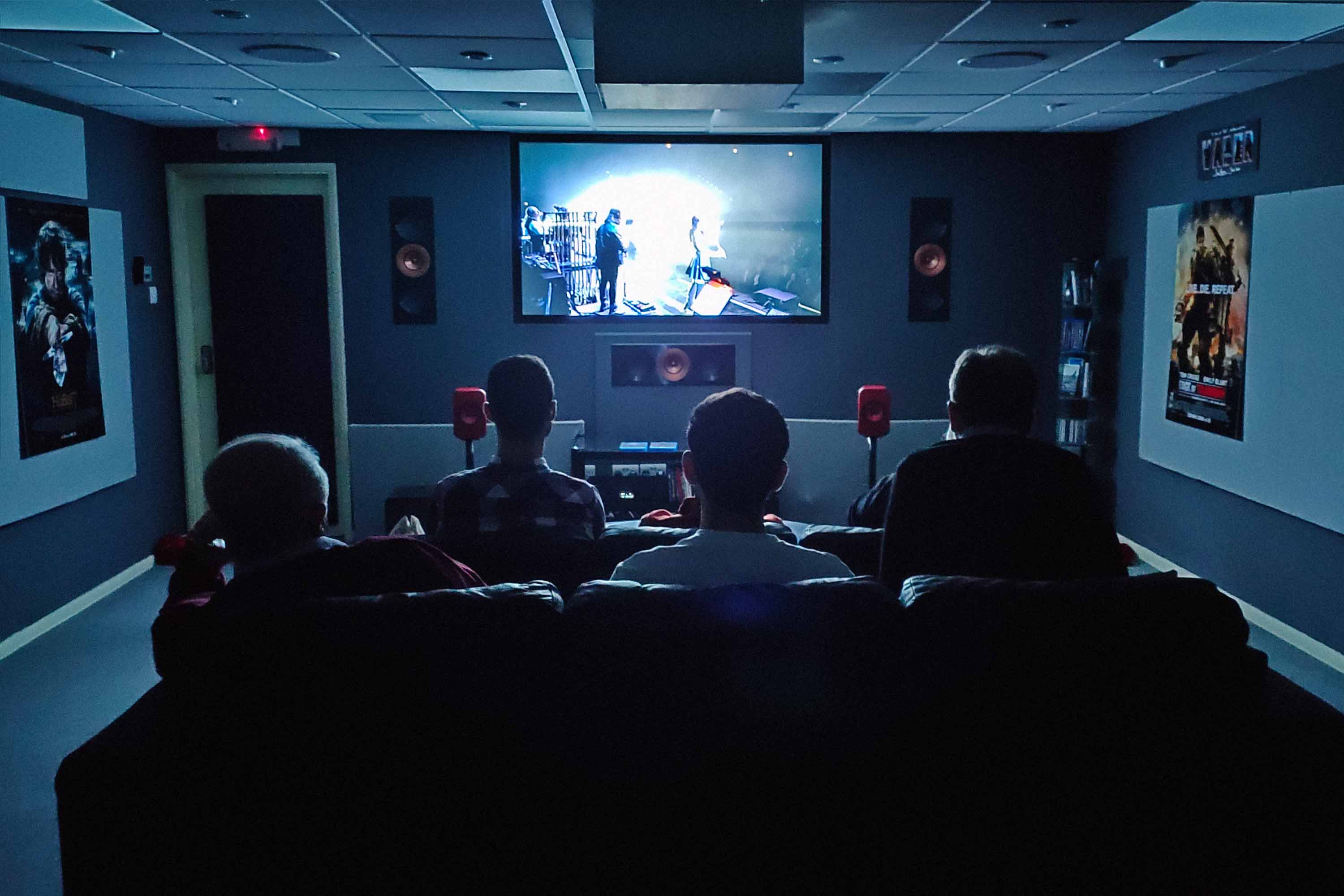One of the many pleasing things about KEF, the British hi-fi brand, is that it has been beavering away making world-class hi-fi equipment in the same Maidstone base for the last 60 years. It’s true it has outgrown its original prefabricated Nissen hut. And that it has moved on significantly from its first speaker – a meter-high three-way monitor – to producing five-foot space-age parabolic curving towers that look out of this world, and sound even better. But that aside, there’s plenty about KEF – it stands for Kent Engineering and Foundry, another pleasing thing – that is much the same as it was when Raymond Cooke co-founded the company six decades ago.
Cooke was a design engineer for the BBC and a music nut. He’d also been a technical engineer for another British hi-fi brand, Wharfedale. There, he’d grown a bit frustrated and wanted to branch out and experiment more, to try some new innovations. So he founded KEF. His mantra was as simple as it was direct. ‘How do we make loudspeakers better?’ And, really, that has been KEF’s mission statement ever since.
Unless you count the shelves that greet you in reception groaning with awards from What Hi-Fi? and other audiophile magazines, there’s very little that’s showy about KEF. Raymond Cooke was a music lover first and foremost and KEF tends to let its products speak for themselves. Each new speaker has to justify its place in the catalogue. And each new speaker represents a step forward in terms of design and innovation. Sure, if your pockets are deep enough you can commission them to make one of their mighty Blade speakers in the same colourway as your Ferrari – as Graham on the factory floor shows me. (Graham is a KEF lifer, he rummages around on his bench and proudly produces a photo of the KEF team from many years ago. “There I am!” he beams.)



But for the most part KEF concentrates on great design and, of course, great sound. Real value, solid science and modern materials have always been its watchwords. KEF may not be the world’s most famous hi-fi brand. But among audiophiles and people who like to dig just that little bit deeper into their research when it comes to choosing speakers, its reputation is unimpeachable. And you suspect that’s just the way KEF likes it.
As well as a spooky anechoic chamber lined with alien-looking foam shapes to stop sound bouncing off the walls while they test their gear, not ideal if you’re in any way claustrophobic – I couldn’t get out fast enough – my tour of KEF HQ also included a guided look around its on-site speaker museum. It’s fascinating stuff, telling not just the evolution of KEF’s speakers but putting them all into cultural context. We all know that the way we listen to music has changed considerably in the last 60 years. Nowadays KEF does excellent wireless speakers, portable speakers and headphones, a whole range to suit different listening needs.
But it started with that first speaker, the K1 monitor, a three-way construction that used synthetic materials in place of cones made of paper, an early innovation Cooke believed made them sound superior. The following year, Cooke developed Celeste, the first ‘bookshelf’ two-way speaker system to give true high-fidelity performance. In the 1970s KEF received the first of two Queen’s Awards for Export Achievement. By the 1980s KEF had come up with its Uni-Q driver array, now a recognisable KEF trademark. This is where the tweeter sits inside the midrange or bass driver, a look that found its way into KEF’s Reference products within a year. KEF entered the true high-end market with the space-age Muon, which cost as much as a house in 2009, and costs as much as a house today. By the time we arrive in the 2000s and the ‘Eggs’ – multichannel satellite speakers – KEF had the style media completely won over. One clever thing it has concentrated on is eliminating the need to buy separate components, something it calls ‘plug and play’.
At their Maidstone base KEF also has a listening room, of sorts. It’s really just a sofa opposite a swanky hi-fi set-up around which it can swap out its speakers. Visitors are invited to stream whatever music they like, using an iPad and Tidal. The brand is celebrating its 60th anniversary year in 2022 and has just released a couple of products that sound stellar, even by its own standards. It was the perfect opportunity to test them out.
'Sitting in that room with the new kit, scrolling through songs as familiar to me as my own family members was like suddenly hearing them properly for the first time.'



Its new LS50 Wireless II speaker which, as well as being compatible with Spotify, Apple Music etc, has been a hit with people pairing them with their TV for creating mega sound while viewing, or playing games (it has an HDMI input).
And at the higher end, its latest boundary-breaking Blade speakers, whose sculptural design doesn’t just look great, it helps sculpt superior sound too. There’s also its new Reference models equipped with Metamaterial Absorption Technology (MAT). This technology allows the intricate channels to absorb 99 percent of unwanted sound, eliminating distortion and creating a more natural acoustic performance (you’ll hear the plucking of guitars on songs you previously were unaware featured any plucking guitars at all).
Sitting in that room with the new kit and scrolling through songs as familiar to me as my own family members – ‘Hey Bulldog’ by The Beatles; ‘The Robots’ by Kraftwerk – was like suddenly hearing them properly for the first time. Paul McCartney’s killer rubbery bassline. Kraftwerk’s metallic sheen, as sleek and sharp as its robot authors.
If like me, life, kids and podcasts have somehow got in the way of your life-affirming joy of just sitting and listening to amazing music tracks sounding just as amazing, it was little short of revelatory. I realised how much I’d missed it, and ever since have been trying to set aside some time each day to do exactly that. As a take-away, it was one you imagine Raymond Cooke would have approved of. Sixty years on, his mission to “make speakers better” remains in the safest of hands.



